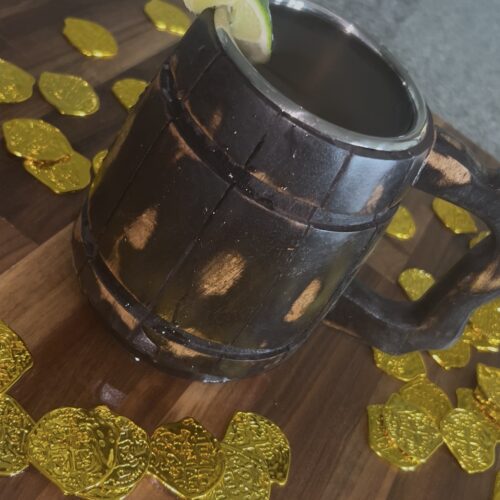Imagine being stuck on a wooden ship for months, surrounded by salty water, stale bread, and grumbling crewmates. Now imagine the only thing getting you through it is a ration of rum—twice a day. This wasn’t fantasy. It was Royal Navy life in the 18th century. And it’s how grog, one of history’s most iconic drinks, was born.
In today’s post, we’re diving into the true origins of grog—from its naval roots to its pirate twist—and ending with a modern-day variation inspired by the Caribbean seas and salt-soaked legends: a recipe for bumbo-style grog, complete with dark rum, lime, and brown sugar.
The Source of the Recipe: A Royal Decree
The most documented grog recipe in history comes from the British Royal Navy, specifically from an order issued on August 21st, 1740 by Vice Admiral Edward Vernon. Fed up with sailors getting too drunk off their twice-daily rum rations, Vernon issued a directive:
“You are hereby required and directed that rum be no longer served to the ship’s company in specie, but that it be every day mixed with the proportion of a quart of water to every half pint of rum…”
This 1:4 ratio (rum to water) became the official grog formula of the Royal Navy. The goal wasn’t just temperance—it was also about preserving discipline and reducing hoarding. Vernon’s own nickname, “Old Grog,” given for his weatherproof grogram cloak, soon became the name of the drink itself.
The Background & Origin of Grog
Before Vernon’s decree, sailors were often issued pure, undiluted rum—sometimes overproof and dangerously strong. It was common practice to drink rum straight, occasionally mixed with stale water or whatever flavoring could be scavenged at port: citrus, spices, sugar.
Water on ships would spoil quickly, developing algae and a rank smell. Mixing in alcohol like rum (or earlier, beer or wine) helped mask the taste and kill bacteria. The idea of mixing rum with water wasn’t new—but Vernon’s order made it official policy.
It’s important to note that pirates were often former navy men or merchant sailors, and the practice of mixing rum and water was already common aboard their vessels. They didn’t need an admiral to tell them that drinking only rum in the tropics was a recipe for mutiny—or unconsciousness. Grog just gave a name to a habit they were already fond of.
Pirates and Their Twist: Bumbo
Pirates, being the rowdier cousins of navy sailors, took grog one step further. Their version often included sweeteners and spices when available, especially in the Caribbean, where sugar and limes were plentiful. This variation became known as bumbo—a richer, tastier version of grog that still packed a punch.
Bumbo wasn’t just a pirate favorite—it was reportedly used to buy votes in colonial elections, bribe sailors, or reward successful raids. Some even added cinnamon or nutmeg for extra flavor, creating a drink that blurred the line between ration and indulgence.
The Recipe: Bumbo-Style Grog
Here’s the version of grog I’m making today—a nod to both Admiral Vernon and the pirates who sweetened the rules.

Grog
Ingredients
- 4 oz dark Caribbean rum
- 16 oz water
- 2 tsp brown sugar
- ½ lime juiced
Instructions
- Combine the rum, water, lime juice, and brown sugar in a tankard or large glass.
- Stir until the sugar is fully dissolved.
- Serve at room temperature or chilled—no ice required.
- Optional Add-On: Add a pinch of cinnamon or nutmeg if you want a spiced bumbo variation.
Notes
- Use room-temperature or warm water for a more authentic taste, as pirates didn’t have ice—but feel free to chill it for a modern twist.
- Dark rum adds depth, but you can experiment with spiced rum or overproof rum for a stronger kick (pirate style).
- This drink is meant to be sipped slowly, not slammed—historically, it was served over time as a daily ration, not a party shot.
